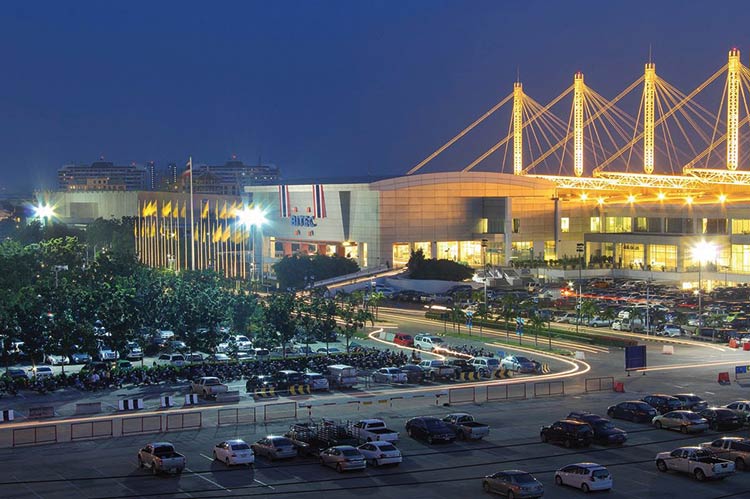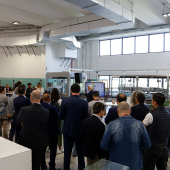Propak Asia 2018 - 13 -16 June 2018, Bangkok, Thailand
With the aim of offering the visitor a strong image of the Italian System, the Ucima Marketing & Promotion Area will be coordinating the presence of Italian companies in a single area at international trade fairs.

The Propak Asia fair - a reference hub for the processing and packaging in Southeast Asia organized by UBM Asia (Thailand) Co., Ltd. - will also host a group of Italian automatic packaging and wrapping machine manufacturers under Ucima with the support of ITA: in compact groupings, thirty Italian companies will take part at the fair, occupying an area of about 700 square meters.
Thailand, high potential market
In support of those who are willing to explore the possibilities of a growing market or consolidate acquired positions, we propose an analysis of the trends taking place in the Asian country (Source: Ucima).
In 2017, Thailand’s economy grew by 3.7% and, according to economists, further increases are expected in 2018 and 2019 (3.9% and 3.7% respectively).
In parallel, starting from the second half of 2017, there was also a real recovery in private consumption, which grew by 3.5% in the fourth quarter (+ 3.4% in the third), driven by the low inflation rate and the higher per capita income. The performances on the IDE front are also seen to be good..
Last year foreign direct investments implemented 818 projects (537 in 2016), worth 282.6 billion baht (over 9 billion dollars). A result that has led Thailand to climb 20 positions and place itself 26th place among the countries where it is easiest to do business (source: World Bank): infrastructural megaprojects, partnerships with foreign operators and, aboveall, strong investments envisaged within the Thailand 4.0 plan for entry into the digital economy.
The latter project, strongly desired by the Thai Government, is aimed at promoting industrial development by stimulating the potential of local businesses in various sectors, including the entire food supply chain (from agricultural activities to processing, from packaging to storage and logistics. and to the distribution), but also of the healthcare, pharma, automation, robotics... The initiative will open up new business opportunities and will inevitably drive the demand for packaging machines.
Italy ranked first among the countries exporting packaging machines
In recent years Thai imports of packaging machines have registered double-digit growth trends. In 2017, Italy ranked first with exports amounting to 69.1 million euros (+ 34.1% compared to 2016), overriding the volumes of Germany which, with a contraction of 22.5 % on 2016, stopped at 61.8 million.
On the other hand, Chinese exports remained stable in the first three quarters of 2017 (+ 0.5% the trend change compared to the same period of 2016).
According to the data of Centro Studi Ucima, in 2016 Thailand imported packaging machines for a total value of 332.3 million euros, up 15.5% compared to 2015. In the 2016 ranking, Germany was the leading exporter with 24% of the total shares and a value of 79.8 million euro, followed by China with 57.1 million (17.2% of the total) and soon after by Italy with 51,5 million (15.5% of the quotas).
For the three-year period 2017-2019, the prospects for development of the Thai market are very optimistic and foresee growth rates at a CAGR of 4.2%. Expanding the analysis to the whole area of Southeast Asia, overall imports of packaging machines in 2016 reached 2 billion euros (+4.2% on 2015), while data available for the first 9 months of the year 2017 show a growth of 9% compared to the same period of the previous year.
Global Packaging Trends: Asia Pacific is the fastest growing area
The Global Packaging Trends 2017 study, carried out by Euromonitor International in collaboration with the main international trade associations (APPMA, PPMA, PMMI and UCIMA) showed that, seen from 2020, Asia Pacific represents the area with the greatest potential of global growth on the packaging market.
If in 2015 the total amount of packaged products sold reached 1,431 billion units, in 2020, it is estimated to reach 1.724 billion units (China, India and Japan together account for 76% of market volumes). In general packaging trends for the future also confirm the popularity of plastics, with significant growth spikes for PET (thanks to better costs than glass) and HDPE.
There should be an inclination towards more simplified packaging forms, suitable for e-commerce sales and a development in the direction of sustainable packaging.
The food sector (976.7 billion units sold in 2015) will see a rapid rise in the cardboard packaging for liquids (+ 12.6%), driven in particular by the increase in consumption of yoghurt (+ 26% in China; + 16% in India). Flexible packaging will instead gain positions thanks to snacks (expected to increase).
The growth in the consumption of bottled water, energy drinks and non-alcoholic beverages will push up the PET bottle segment in the beverage sector (472 billion units in 2015), which will see a marked increase also in flexible aluminum packaging thanks to greater consumption of coffee in the forecast period of 2015-2020 (CAGR + 7.3%). The performance of metal bottles is also good (China + 8.4%), with an increase in beer consumption and premium products.
In the Beauty & Personal Care sectors (64.6 billion units sold) plastic tubes will grow considerably (+ 7%), whose sales will increase by 3 billion units by 2020. Flexible plastic packaging will continue to be widely used in India while China will lose market shares. In the field of Pet Food (5 billion products in 2015), the aluminum and plastic pouches with zip or pressure closure are estimated to grow at a CAGR of 10% between 2015 and 2020. The trend of flexible packaging for large packs is also good.
The Home Care market (39.9 billion units in 2015) in Asia Pacific will be driven mainly by flexible, more convenient and easy-to-use packs in flexible film (especially in India). With a view to saving, producers will also offer the market refillable pouches and bottles.



















